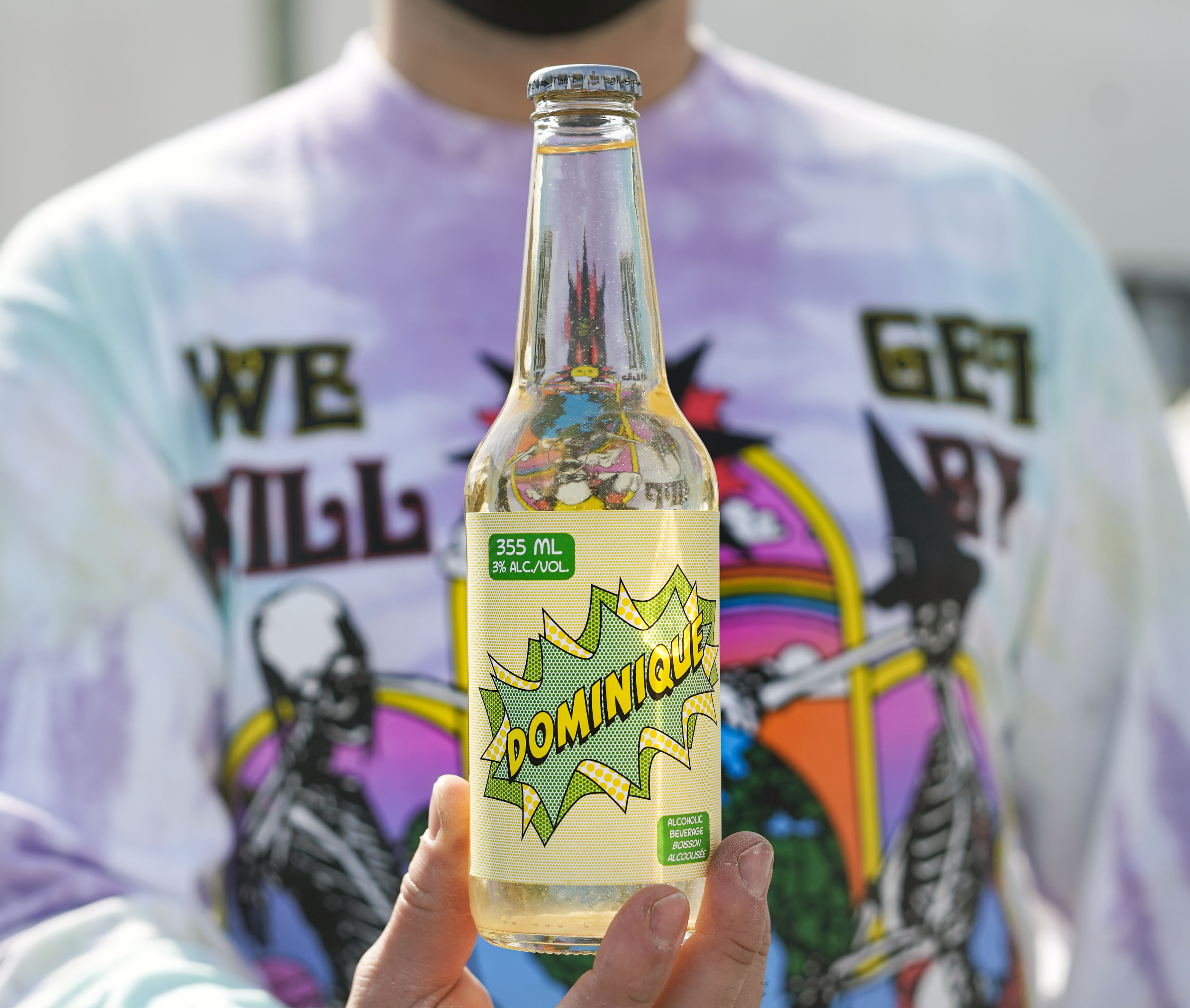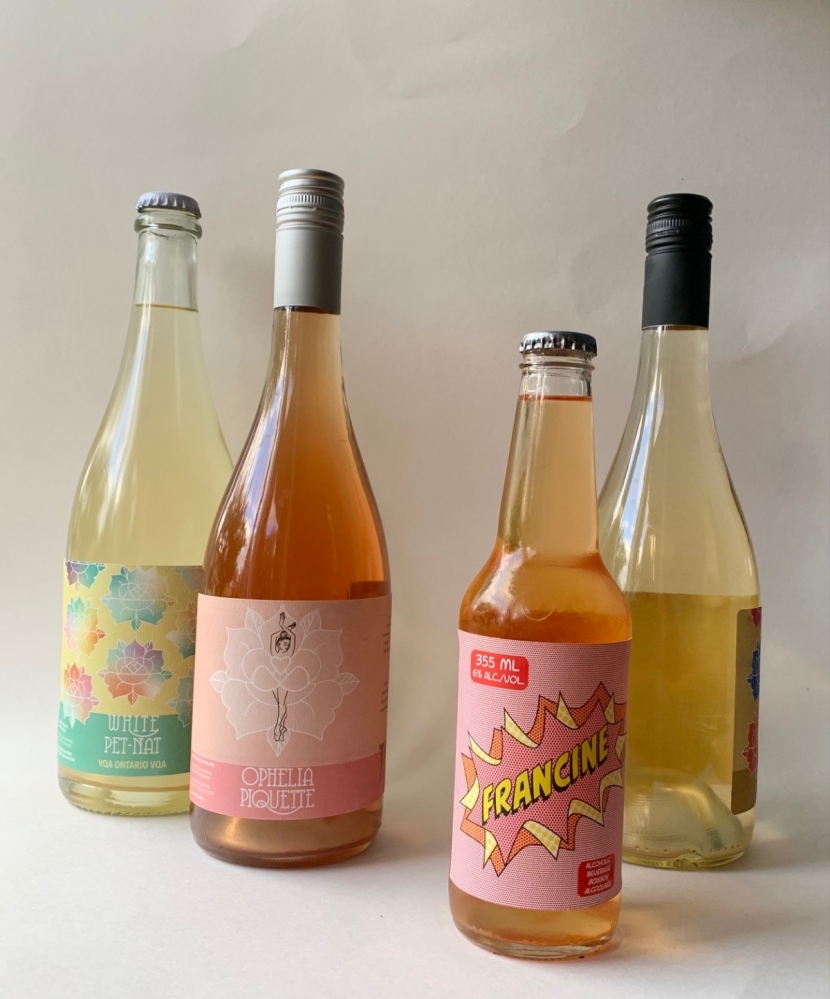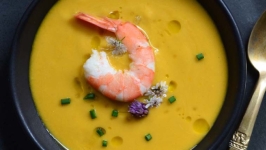A Little Wine with Largesse
While piquette may be a new term for many, it was a farmhand staple throughout Europe in previous centuries. As of late, it’s making a comeback in North America, raising the once-peasant drink to a purposeful and enticing midday quaff.
The unique character of any grape varietal lies predominantly in the skin — this is where you’ll find most of the compounds that create varietal distinction. The skins host the volatile aromatics, tannins, oils, phenolics and colours that create a wine’s character. When the grapes are pressed not only is the juice released, but so are most of these all important chemicals.
Often at this point, the skins, having shed their usefulness, are left to compost, becoming food for future vines. In Italy, wine-makers sometimes soak this pomace with water, leave it to ferment and then redistill it into grappa. Withholding distillation lands them in piquette territory.
Not quite a wine, piquette rides the line between a low ABV tangy wine spritzer and a refreshingly bright and crisp lager. Soaking the leftover pressed skins allows the extraction of any remaining character, while also ideally kicking off a secondary fermentation. What’s left is a wine proxy, a glass of delicate grape essence. Alcoholic La Croix, if you will. Traditionally this was enjoyed by farmhands at lunchtime. It was a perfect treat for folks who had to go back to work after a few glasses.
The beauty of the style lies in its delicacy. As it’s made entirely of water and leftover skins (and maybe a titch of honey to ensure a secondary fermentation and carbonation), piquette will never compare to a big, robust wine. Rather, it’s meant as an everyday refresher to go with a ploughman’s lunch before signing back into that Zoom meeting. This drink, at its core, is about re-using a product previously destined for the compost pile.
Pastel in colour, these wines get their ghostly hues from the already heavily extracted skins. The flavour profile varies from one to the next depending on the grape used, which can make for some exciting blends or single-varietal examples.
In Hillier, Michael Traynor, owner and winemaker at Traynor Family Vineyard, was the first in Prince Edward County to jump into the tradition. Not being a beer person paired with the winery’s aim of moving towards zero waste made for a solid argument in producing piquette. Traynor says they already press the grapes very gently when making their table wines. This means that the leftover pomace of skins, stems and seeds will still retain some juice, creating the perfect base for a piquette.
Named after his daughter, Traynor’s Ophelia piquette has been produced for the past two vintages, slowly amping up production and delving deeper into the process. The most recent vintage features more red grape skins to provide a richer colour and more fresh-berry notes. In addition to this, Traynor’s replaced a percentage of the water with unfermented apple cider to provide some acidity and without needing to add any sugars whatsoever.
“Traditionally it was made for the wine-makers, the vineyard workers and the cellar hands,” Traynor explains. “They made it for themselves to have something nice, light and refreshing. That’s kind of the intention for us, to have a substitute.” Historically, wine-makers sold all their wine to make ends meet, but would still desire a drink themselves. The low ABV meant that it was not only a great midday lunch drink, but ensured that hangovers would be exponentially easier to avoid — a necessity in an industry that thrives on manual labour and early mornings.
While tradition has spurred piquette into modernity, Lee Baker’s approach to the process is something of a hybrid, somewhere between brewer and chef. As the wine-maker at Redtail Vineyards, he has many years of traditional wine-making experience under his belt. He's excited about piquette because it gives him and the team an opportunity to delve into a lesser-known style, in their own unique and experiential manner.
Baker’s takeaway of the style is that it’s wholly interventionist. Despite a move from wine-makers towards less-invasive wine- making practices, the act of reuse and refermentation goes beyond the realm of what many would consider a “hands-off approach.” He sees this as a positive, embracing the opportunity to operate within the grey areas that forgotten traditions leave behind.
Rather than experiencing terroir solely as what’s in the vineyard and cellar, Baker’s approach to piquette amplifies a social and cultural terroir: that of other local producers to which his piquettes are attached. The team at Redtail is rolling out six separate piquettes, each unique in its own right. Each bottling has its own character and highlights more than the sum of its parts.
Redtail’s first foray, Dominique, was a piquette made of apple pomace that it received from nearby FieldBird Cider. To this, they added honey from Randee’s Bees (a short drive away from the winery) to kickstart refermentation. It’s not hard to imagine that those bees produced honey with pollen from Redtail vineyards, fulfilling a cycle of sorts.
Redtail’s second release, Francine, is a concoction of Gewurztraminer skins, water and maple syrup. Here, Baker is slowly showing his hand and we can see what he aims to showcase in his piquettes. Embracing the nose-to-tail nature of using every last bit of the grape, he finds that tying in food-like flavour pairings is well-suited for this style of drink; Gewurtz florality and orange blossom notes being held together with the rich, smoky maple sweetness.
Kirstyn Mayers, head of Redtail’s marketing and sales, says that because not everyone is familiar with piquette or what it entails, it’s much more important to be ”tasting what’s in the bottle and deciding that they like it.” She goes on to say that the names for the piquettes come directly from folks the team sees as heroes in their everyday lives, which its labels reflect.
Dominique is a nurse practitioner in a long-term care centre; Francine, a clinical and health psychologist. Redtail’s uplifting of these everyday heroes doesn’t end there: a portion of the proceeds from piquette sales will go to the namesake’s charity of choice. It’s easy to understand how they’ve sold out of their first iterations so quickly: an approachable drink backed by a great cause is the perfect pairing.
With four more releases slated for the 2020 vintage still to come, it’s too early to tell what the 2021 harvest will have in store. Baker says his winemaking philosophy changes with each vintage.
Meanwhile, Traynor and his team will be refining and tweaking Ophelia, making their best iteration of the classic quaffer. Both wine-makers approach their wines and piquettes with the goal of letting their fruit speak for itself.
Despite being small, piquette is capable of carrying itself in conversation: It’s a natural magnet to which beer, wine and cider drinkers can attach themselves. Its intrinsic sustainability and demand for proper treatment makes it a serious drink, regardless of its low alcohol or delicate nature. It’s a fun drink with staying power. Sometimes it's the little things that make the biggest waves.
Traynor Family Vineyard
1774 Danforth Rd., Hillier, Ont.
traynorvineyard.com | 1.877.403.4224 | @traynorvineyard
Redtail Vineyards
422 Partridge Hollow Rd., Consecon, Ont.
redtailvineyards.com | 613.965.0893 | @redtailvineyardspec







